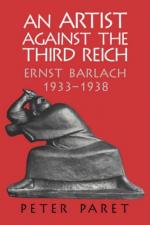|
This section contains 3,077 words (approx. 11 pages at 300 words per page) |

|
Dictionary of Literary Biography on Ernst Barlach
When plays of the expressionist Ernst Barlach were first performed in the 1920s in major cities of the Weimar Republic, no less a critic than Thomas Mann compared Barlach favorably to the young playwright Bertolt Brecht, then much in vogue, and praised the folk-song-like, dark power of Barlach's Der tote Tag (The Dead Day, 1912). Barlach's reputation as the most interesting playwright of the expressionist movement is attested to by the fact that more studies were devoted to his work than to that of Carl Sternheim, Georg Kaiser, or Ernst Toller. During the 1920s, two of his plays, Die echten Sedemunds (1920; translated as The Genuine Sedemunds in Three Plays, 1964) and Der blaue Boll (1926; translated as The Blue Boll in Three Plays), had successful, long runs in the expressionist staging of Jürgen Fehling and Leopold Jeßner. While the playwright's achievements have not been questioned by literary...
|
This section contains 3,077 words (approx. 11 pages at 300 words per page) |

|


